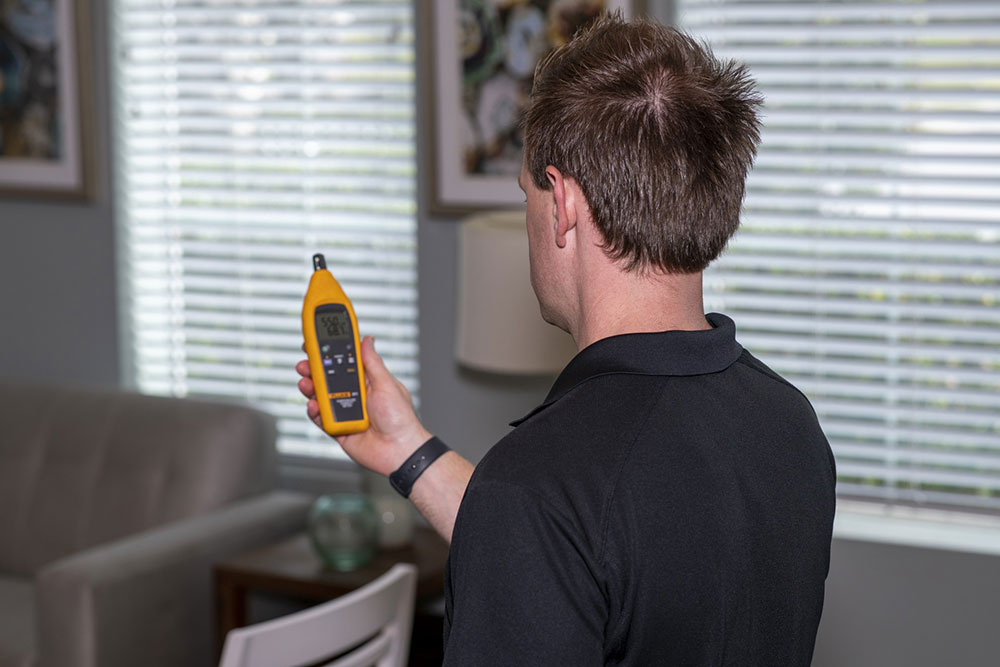Did you know that about 70% of homes in the U.S. are infested or have been infested with mold at one point? A very shocking statistic considering most people are oblivious of having mold behind their walls or in other places at home.
If you have mold in your home, at least you’re not alone. If you’re not, then it’s all on you to do everything you can to ensure you’re not part of the bunch. That’s because mold is more than just ugly stains; it’s also a health hazard.
It takes a lot of effort and commitment to prevent mold from infesting your home, but it’s not impossible. Remember, even a small patch of mold can turn into a full-blown infestation. For the sake of your beautiful home and its occupants, you should do all you can to get rid of and prevent mold infestation.
The million-dollar question thus becomes; how do you prevent mold from infesting your home? Read on and find out how to prevent mold from infesting your home and what to do if you’re too late.
1. Increase Airflow in Your Home
Mold is a fungus that thrives in dark, enclosed, and humid places. That means homes with minimal airflow present the ideal environment for mold growth and proliferation. Remember, areas with minimal airflow are typically damp and lack adequate sunshine.
Letting enough air in and out of your room is one way to reduce humidity and make your home an unfavorable space for the mold to grow. Doing so is as easy as letting in the sunshine and air, plus it also increases your home’s natural lighting and makes it more lively.
Make a point of opening your doors and windows at least once every day. Make it a habit, and you’ll be one step closer to having a mold-free home.
2. Fix Any Plumbing Issues and Leakages ASAP
No home is devoid of plumbing issues, but you should organize to take care of the issue as soon as you can. That’s because the longer you wait, the more time you give the mold to grow and multiply. Pipes are predisposed to bursting and disintegration, especially if they’re old.
That said, you should keep an eye on your pipes for any leakages and address the matter ASAP. Remember, leaking pipes equal more moisture, which translates to mold prevalence.
It’s better to take care of the issue early on before it worsens and becomes very expensive to handle. Don’t be the guy who has to pay for expensive plumbing repairs and mold removal, not to mention the water bill.
3. Declutter Your Home
Most people shudder at the thought of decluttering their home. That’s because the clutter that has accrued over the years is enough to block the Mississippi river. However, if you want a mold-free home, then decluttering your home is something you just have to do.
Excessive clutter prevents proper air circulation, which harbors moisture. This moisture accumulation spurs the growth of mold. That means if you have a lot of clutter, you probably have a lot of molds beneath all that clutter.
Do your best to have a clutter-free home. Find out how to declutter your home and get a little help from your friends and family. If it’s too much work, you can get the professionals to help you out.
Start with the clutter that blocks the ventilation because that’s where moisture is most likely to accumulate. Don’t be afraid to get rid of the stuff that you don’t use.
4. Get an Exhaust Fan for Your Bathroom
We use our bathrooms every day, and it’s a great place for moisture to accumulate. Your bathroom is wet almost all the time and is the perfect spot for mold to start its empire. It can also be a hub of the dreaded black mold if you’re not too careful.
That said, you should consider installing an exhaust fan for your bathroom if you don’t have one. This exhaust fan will help eliminate the excess moisture and give your usual bathroom ventilation a much-needed boost.
What’s more, the exhaust fan will help get rid of any unbearable odor emanating from your bathroom. It will also get rid of any mold spores lingering in the air. Consider getting an exhaust fan for your bathroom to keep it fresh, moisture-free, and, most importantly, devoid of mold.
5. Maintain Your House Plants
As outrageous as it sounds, maintaining house plants is an excellent way of preventing mold proliferation. While house plants look good and keep the air crisp, overgrown houseplants may harbor mold and even mildew. Mold may make your house plants’ leaves and soil its new home.
Taheebo tea prevents mold from growing in the soil of your house plants. All you have to do is spill a bit of the tea on the soil and let it seep in.
Also, keep your house plants in well-lit and ventilated areas to prevent mold growth. A little sunlight, ventilation, and taheebo tea will go a long way in preventing mold growth on your house plants.
6. Mop up Any Stagnant Water
It may seem like common sense to mop up any stagnant water, but some folks just let it dry out. Make sure you mop up any standing water because it’s the perfect spot for mold to grow. It doesn’t matter whether it’ a simple water spill or a roof leak; make sure you wipe it dry.
Regularly inspect your home for pools of water and wipe them dry. Make sure you check around the freezer, dishwasher, hot water tanks, and other pooling hotspots. If you find any puddles, take a mop and do what you have to.
7. Treat Your Basement
We all hate going down our musty basements, but it’s something you have to do if you want to prevent mold infestation. Treating your basement involves using a dehumidifier and a foundation drain to get rid of the moisture stuck beneath your home.
You should also consider installing thermal windows and insulating your walls to get rid of any condensation. Do this to prevent mold in your basement.
How to Get Rid of Mold If It’s Too Late
So you were a little careless, and now your home is infested with mold. Don’t despair; there are plenty of ways to get rid of mold. Here’s what to do when it’s too late.
Identify the Root Cause
The first step to take is identifying the root cause of the problem. That means you need to identify the source of moisture or dampness. If your basement has a musty smell, then maybe the basement is the issue.
If it’s not the basement, it could be a roof or plumbing leak. Also, check the freezer, washing machine, and other appliances that use a lot of water. Once you identify the source, you can move to the next step.
Know the Mold Type
Approximately 4.6 million asthma cases in the U.S. point to dampness and mold exposure. That said, knowing what mold type it is can help you understand how urgent the situation is. Certain mold species, like black mold, are harmful to your health.
A simple mold test should let you know what kind of mold you’re dealing it. If it’s a dangerous species, you can take appropriate steps to safeguard your family’s health.
Dry Your Home
After knowing the mold type, you need to make sure your home is completely dry. You can try opening the doors and windows, but you might need a fan or industrial drying equipment if the problem is too large.
Sometimes the moisture isn’t even visible, which is why you might need industrial drying equipment. This will help get rid of the hidden moisture in fabric, wood, and even cement. Drying your home is mandatory for complete mold elimination.
Size up the Problem and Get Cleaning
Look at the extent of the infestation and determine if it’s necessary to bring in the professionals. If not, then get proper clothing and brush off the mold. Soap and water should do the trick, but for more stubborn surfaces, you’ll need stronger chemicals like mold prevention spray.
Clean the House Contents
Apart from the wall, floor, and furniture, other stuff may also be contaminated with mold. If it’s an extreme infestation, you’ll need to consult with a mold remediator to restore your items. That way, you can get your mold-infested items back as good as new.
How to Prevent Mold Made Easy
If you follow the above tips, you’ll prevent mold easily. You can do most of the work on your own, but for severe cases, it’s best to leave it to the pros.
With the plethora of mold removal companies, it can be challenging to find a good company to do your bidding. For professional and expedient mold inspection, removal and testing, contact us today, and we’ll help you out.

